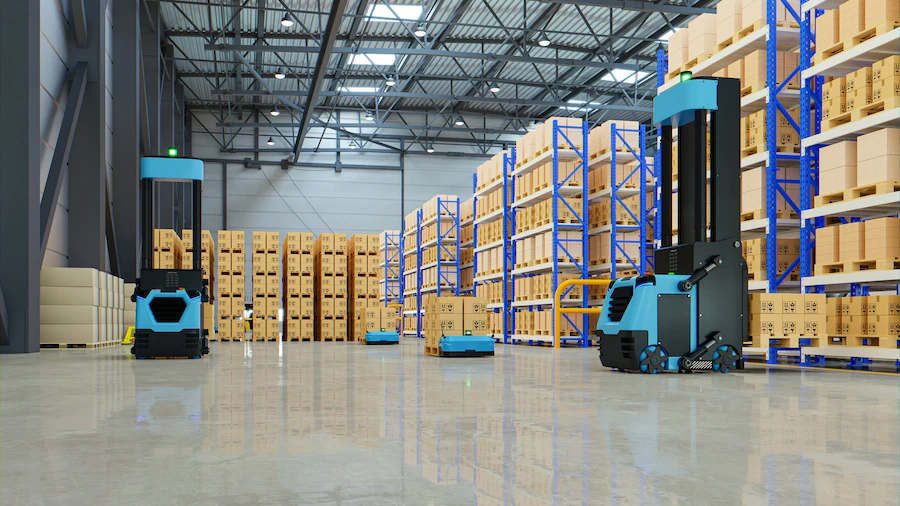Did you know that roughly half of all businesses fail after just five years? If you’re hoping to beat the odds, then you’ll need to stay on top of your supply chain processes to keep your business efficient. And that means being aware of the latest developments as you plot your next move.
Fortunately, you’ve come to the right place. Read on to learn about the five emerging trends to watch in the transportation and logistics industry!
Top 5 Emerging Trends In The Transportation And Logistics Industry

1. Check Out Cloud Platforms
Cloud platforms offer one of the best ways to improve supply chain processes. With these, the software can serve as a convenient way to manage multiple operations. Additionally, multiple stakeholders can have access to it to check processes and ask questions.
Fleet managers can use cloud-based software to track their drivers and assign routes, for example. And financial managers can track profits and spending to help with budget management.
Using an option such as LoadPilot Freight Broker Software, for instance, can help streamline bookings and invoices. By turning to software, you also will have data analytics to check your efficiency.
Maybe you’re not happy with your invoicing timetable or total transportation time. With cloud platforms, you’ll be able to pinpoint areas for improvement.
2. Understand How Automation Can Help
By turning to automation, companies can reduce the number of individuals needed to complete work. Instead, machinery and robotics can tackle tasks like moving objects or transporting items in a warehouse. With robots, you won’t need to rely on human workers — or pay for salaries and retirement benefits.
With automated vehicles, you won’t need human drivers to drive through your warehouse. You can save time, too, since the robot will know exactly where to go thanks to sensors. Further, the use of robot picking arms can ensure that you’re dropping the right items into a particular order.
Artificial intelligence (AI) is another one of the biggest innovations in the logistics industry. Essentially, systems using AI can simulate human intelligence to complete tasks.
For instance, robots driven by sensors and AI will have the ability to navigate a warehouse space without human intervention. They will then be able to perform anything from inspections to organizational tasks.
While self-driving cars aren’t a regular part of the supply chain yet, expect them to be in the future. This can help eliminate the need for human drivers. Thanks to AI, robotic drivers will have the ability to drive and deliver goods safely.
3. Consider the Impact of the Blockchain
While blockchain technology might be synonymous with cryptocurrency, its uses don’t end there. Blockchain offers a way for companies to implement a more secure system to manage data.
Data can include sensitive items like finances. It also can include data related to employees that a human resources department might use. And all of this data can be updated right away as products leave your facility or new employees come on board.
In other words, blockchain enhances the security of a company’s most sensitive systems. Because of this, the risk of fraudulent activity or leaked secure information will go down. This, in turn, reduces the likelihood of a supply chain crisis for your company.
Further, the blockchain provides great transparency. That’s because it tracks all data related to the company on a secure and decentralized platform. For managers, this offers a convenient way to evaluate the efficiency of internal processes.
4. Look for Last-Mile Delivery Options
When you want to avoid a supply chain crisis, don’t overlook the last leg of the journey. When you’ve received an order, ultimately you’ll need to ship the packaged goods to the recipient. This last-mile delivery is crucial to making a good impression on the customer.
Unfortunately, this also tends to be a costly part of supply chain processes. Take a careful look at your approach to shipping and delivery to find areas to cut costs. And use technology to help with this evaluation.
You can use software to track routes that your delivery drivers take. Even better, you can determine more efficient routes that bypass traffic jams and help with fuel efficiency.
You also can send real-time notifications so customers know exactly when your driver is coming with a delivery. This helps to ensure that the unloading process can happen quickly. Then your driver can get back on the road to make their next delivery.
5. Check Out Drone Deliveries
Since the final delivery step in the supply chain is so critical, there’s one more trend to be aware of. That trend is the increased use of drones to handle deliveries.
While this is not feasible in some instances, even limited use of drones can help. They can be most effective at making deliveries within a tighter radius of a warehouse.
For example, if you want to guarantee quick delivery of a product in under one hour, a drone can enable that. Products targeting local customers can be plucked from their warehouse and delivered via drone within an hour. Best of all, you won’t need to use a human worker, so this will free them up to do a different task.
Watch for Transportation and Logistics Industry Trends
Trends in the transportation and logistics industry can help you stay on top of orders and become a leading company. Look for developments in AI and automation to help speed up internal processes. And commit to fine-tuning your delivery process to save money and time.
When you need more suggestions to help your business flourish, check back for new and informative articles!
Additional:




























